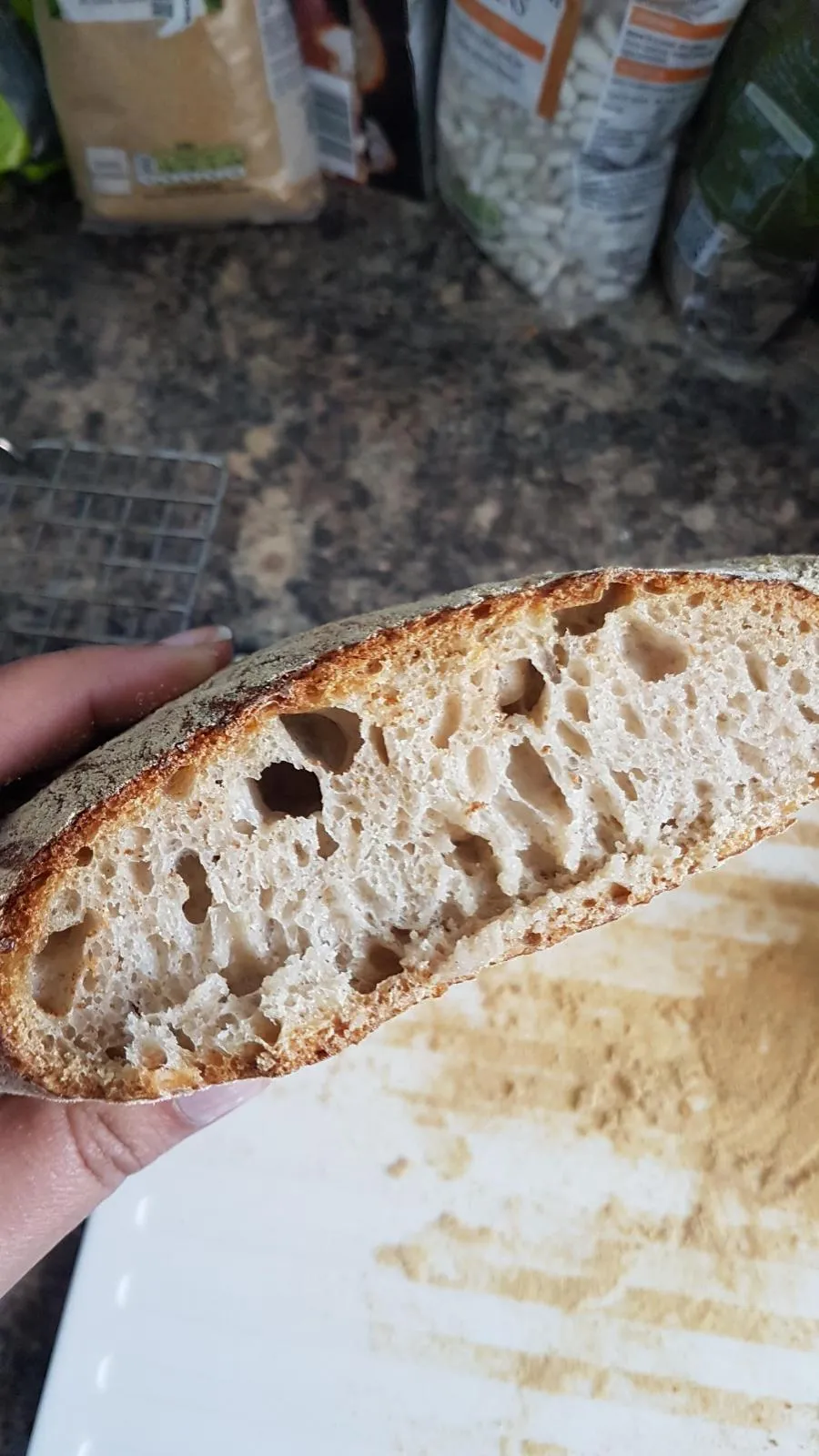
Hi - I tried to make a no knead sourdough and it didn't turn out right. I could tell it was going to go wrong because it was hard to shape, but wasn't sure whether it was under or over proofed.
Day 1: I'm confident with my starter, it is made from Medium Atta/chappatti flour which is a blend of wholemeal flour and soft white flour. It is 100% hydration, it bubbled up nicely, I used it just past its peak and it floated.
I used 150g starter, 350g room temp water and 500g strong white bread flour, so 74% hydration. I mixed this and left it for an hour, covered, room temp (I'm in London, it's quite hot at the moment). Then I added 11g salt and mixed that in, covered with a tea towel and put it in the fridge for 18 hours.
Day 2: Bulk fermentation - I folded it 3 times, resting it for 30 mins each time, at room temperature, pictures are attached, it stayed sticky each time. The dough did get a bit smoother each time, but not completely smooth / domed. It did rise a bit and I could see small holes through the side of my bowl. 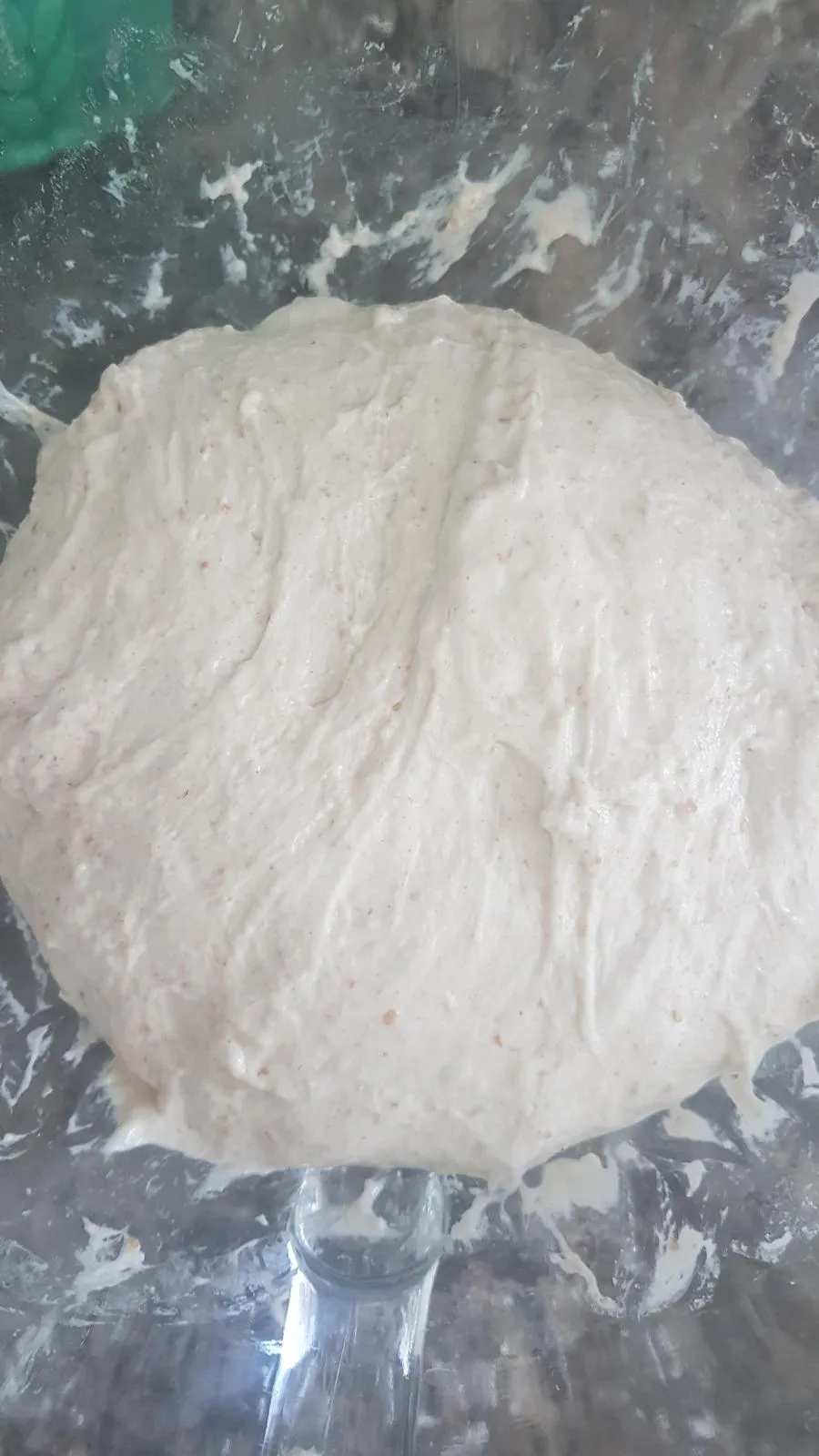
I tried to shape it, gave it a 10 minute bench rest, but it was very sticky and couldn't be shaped (I ended up using a fair amount of flour, but it stayed sticky). So I thought it needed more bulk fermentation, I folded it a few more times, as above. After 3 hours, it was still sticky but I was worried about over proving so I put it in to my banneton (essentially scraping it into my banneton, it still couldn't be shaped but was slightly firmer than before).
I put it in the fridge, covered, for 8 hours and it did rise, picture attached where it is spilling out of the top (my banneton is 27cm x 13cm x 6cm, I'm not sure what weight dough it is meant to hold), but it was quite flat, it did not dome, it had quite big holes towards the top, and seemed quite unstable. It didn't dome nicely and then begin to flatten, it just rose quite flatly in the first place, I guess because I hadn't shaped it and created any tension. I tried to do the finger test and the indentation seemed to stay permanently. (I dusted it with cornmeal to stop it sticking, that's what is on the top.)
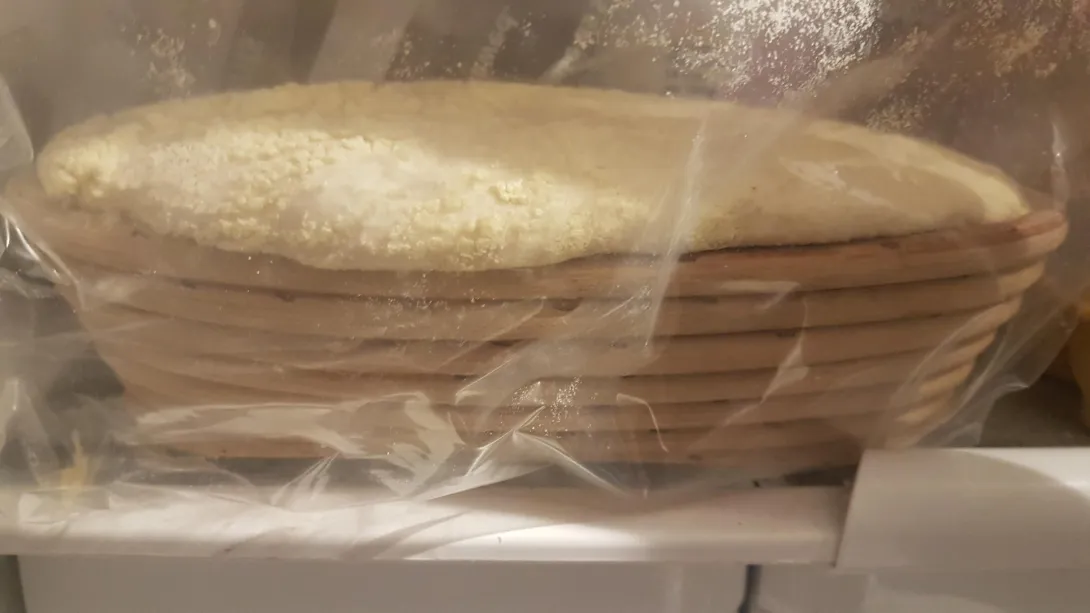
I turned the dough out and it completely flattened so I thought it might need longer to prove and build the gluten so I gathered it back together (it was a bit firmer) and put it back in the banneton and fridge for 5 hours.
Day 3: It had risen, picture attached, but not spilling over the top. It was still not domed and seemed quite flat, and I could see little holes towards the top.
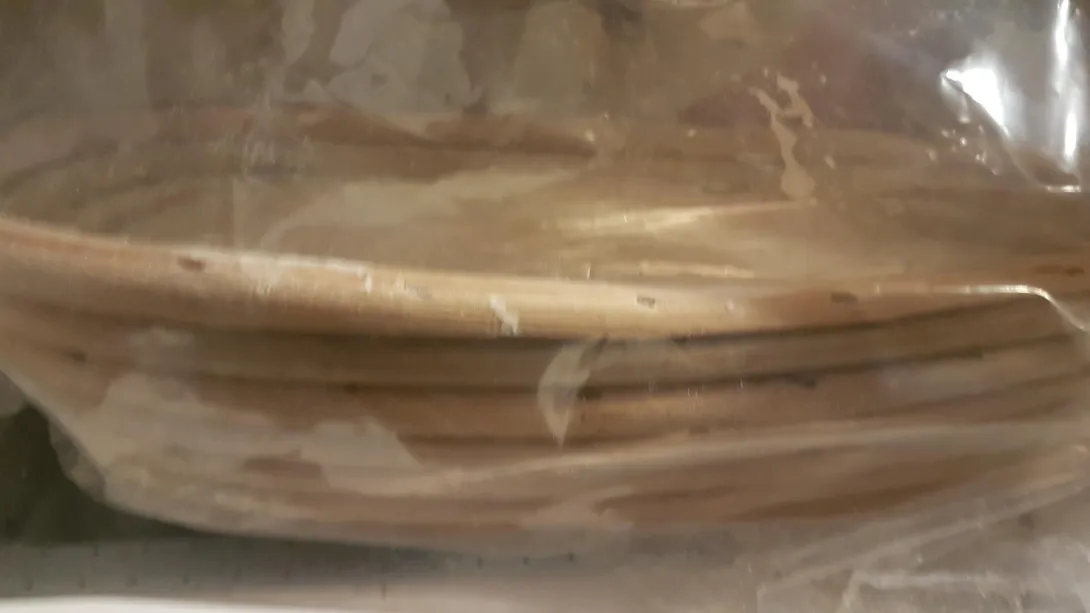
I turned it out, it spread quite quickly, I couldn't really slash it (but that might be because I don't have a lame, I used a pizza cutter - but the slash was better than the first time I turned it out and tried to slash it). I baked it in a dutch oven (and I have baked yeasted bread in a dutch oven before so I don't think that was the issue).
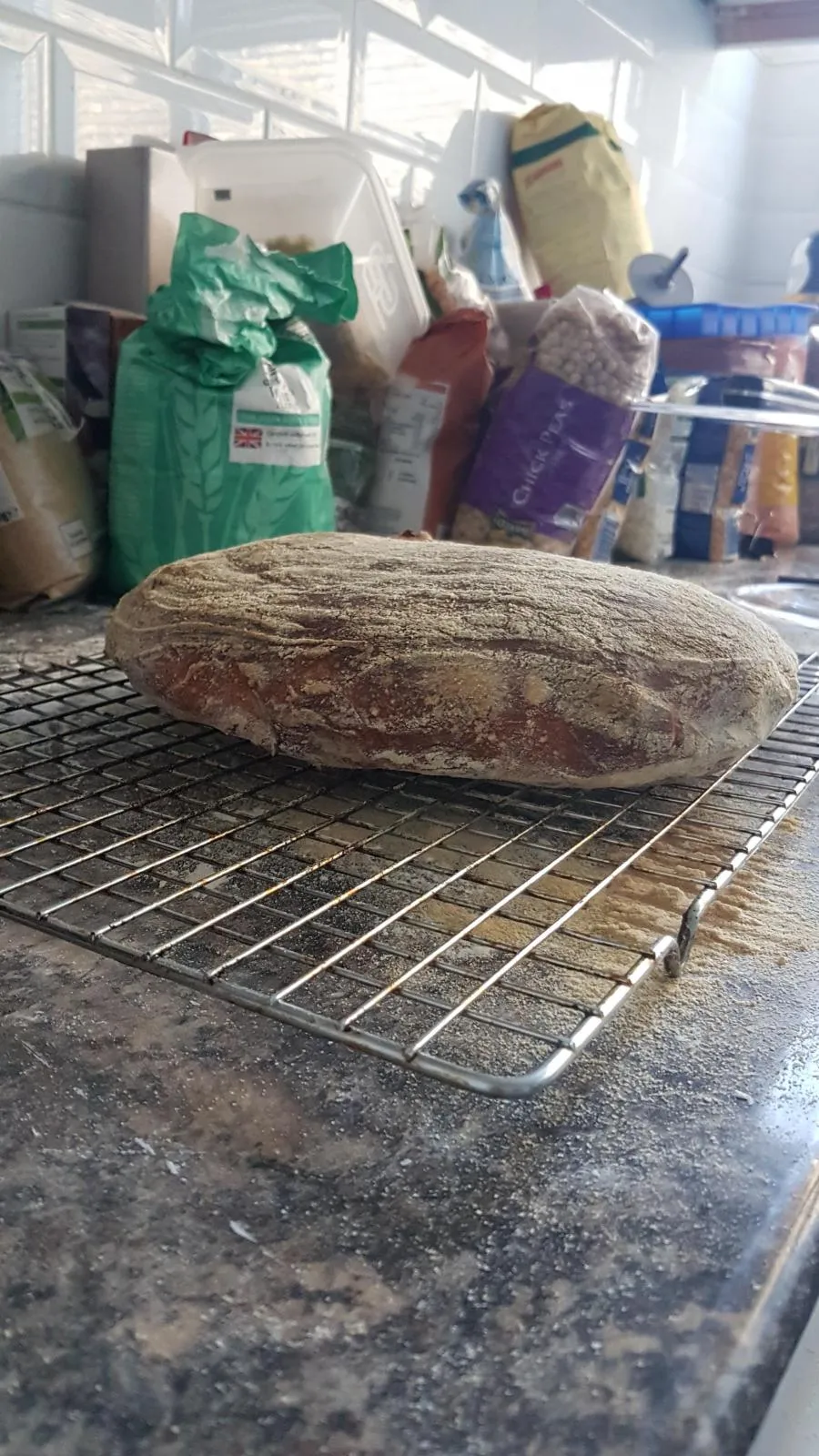
The final product is obviously quite flat and not very holey, the bread was a bit gummy (I did let it mostly cool down but got a bit impatient after 50 mins and cut one end, not down the middle, so I don't know if it would have been gummy anyway - I feel like it would). The flavour is nice, has a tang, and the crust is good, but the issue is the texture / size.
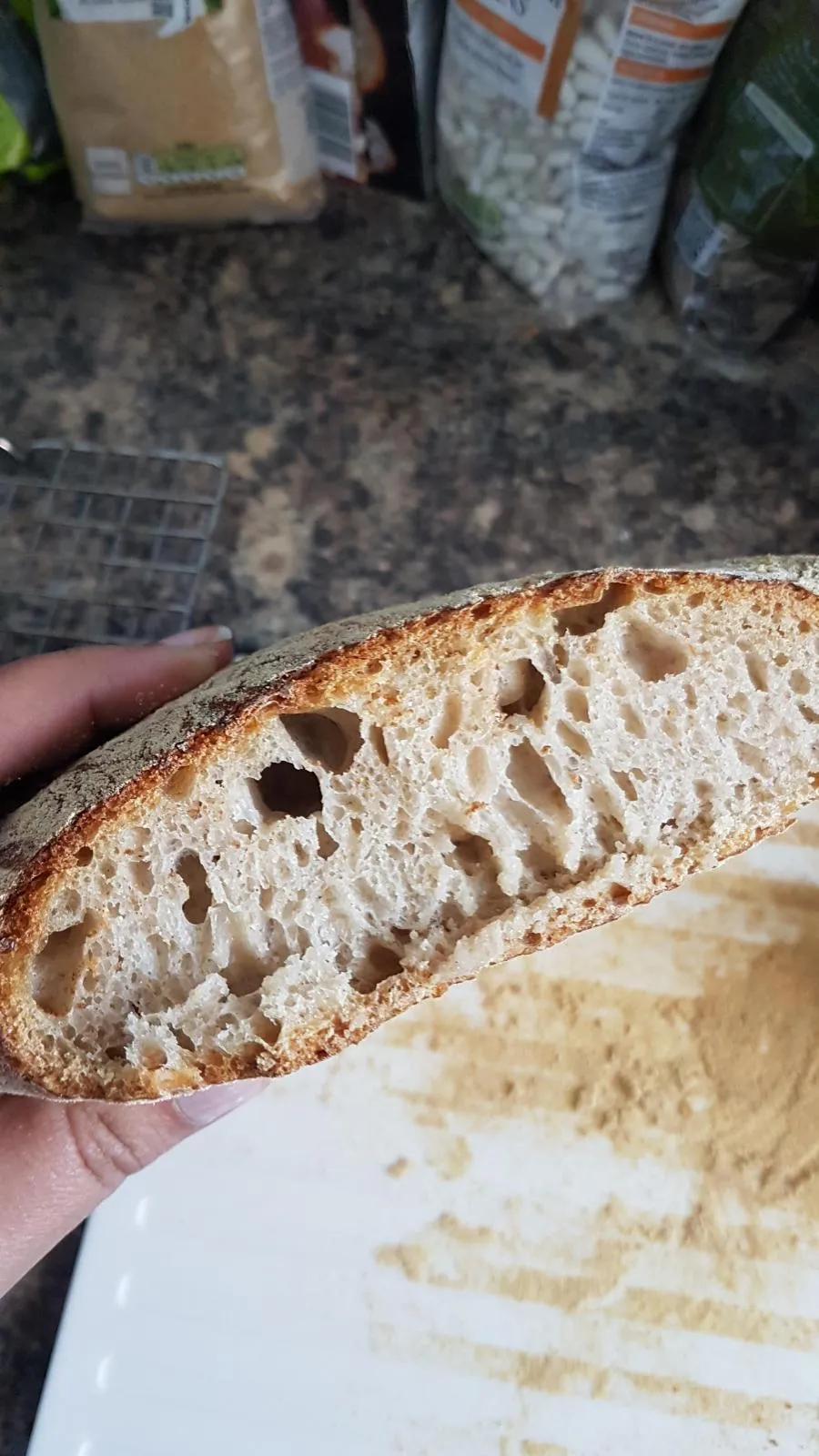
Any thoughts would be greatly appreciated!
Thanks.
Your dough was substantially over-fermented. Its spilling over the side of your banneton is the giveaway. It should have risen just short of the top by baking time.
Typical causes of over-fermentation are, (1) using too much starter, (2) fermenting dough at too high a temperature or, (3) fermenting dough for too long.
Typical amounts of prefermented flour are 10-20% for sourdough loaves and your using 75 g starter flour for 500 g of flour is in line with that.
You do not mention specific temperatures at any point in your narrative aside from a brief London weather report. I suspect your "room temperature" was pretty warm. Pay close attention to temperature. 78˚F (25˚C) is a typical dough fermentation temperature.
You don't describe how you mixed your dough. White flour dough at 74% hydration can be challenging for beginners to handle. Warm London weather is humid weather, which can make 74% hydration feel and act like 84%. You could give yourself a break and lower that hydration to, say, 70%. I highly recommend french folding at mixing time to develop early dough strength.
Your timings are long for hot London day. Three hours of bulk fermentation, assuming above temperatures, is long if a fridge retard is to follow. And high ambient humidity exacerbates the effects of a hot kitchen.
When you shape and settle your dough into the banneton, its surface should be a 1-3 cm below the rim (lay a straightedge across the top to measure). After a cold retard, it should barely have risen -- driven only by the dissipating warmth the dough carried with it into the refrigerator, which should be little for a 500 g loaf but can be substantial if the "room temperature" it came from was high. When it finally equilibrates to refrigerator temperature, yeast become inactive and rising stops.
It would help readers to know whose/what published formula and process you are working from.
So try to "under-ferment" your dough next time.
Tom
Thanks Tom, this is really helpful.
I was using a recipe from Bread Ahead's Baking School book, a bakery in Borough Market (https://thehappyfoodie.co.uk/recipes/no-knead-sourdough), except the difference for me is that I didn't have rye flour so my starter is not a rye starter. And with the timings, where it says e.g. 8 - 12 hours, I kept to the shorter end of that - more out of impatience / over eagerness rather than an actual assessment of my dough! (Interestingly, I also tried to make Bread Ahead's cinnamon rolls twice, and again, my bread dough ended up being very sticky (again, no rye flour, so I substituted buckwheat that time but it was only about 50g)).
I didn't measure the temperature of my kitchen but I think it was about 25 C that day.
And, also, with hindsight, the over fermentation makes sense... I had to feed my starter twice too. The first time I left it for 8 hours overnight and it rose and collapsed again (my kitchen is also warm overnight), whereas the next day it reached its peak after about 3 hours - so I think I do have a hungry starter in the first place.
The first mixing I did was literally mix it with my dough scraper / hand, just to bring it together (per the book).
The folding was stretch and fold (also the same technique for the cinnamon rolls) - I'll use your suggestions for the next time though, French folding and lower hydration. Would you also recommend bulk fermentation in the fridge to slow things down, or is that OK at room temperature if its just 3 hours?
Thanks
Sabba
It sounds like you're almost there. Bread Ahead is a good source. I remember them from a visit to Borough a few years ago. My favorite in London is Little Bread Pedlar (railway arch, Bermondsey). They supply wholesale to shops like La Fromagerie. Great bread.
You really can't -- or shouldn't try to -- do an entire bulk in the fridge. You need to give the yeast a chance to do their thing along with the flavor metabolism that the SD bacteria contribute at temps too low for yeast to work (i.e., in the fridge). Just watch the dough. Look for little bubbles on the surface that should start appearing after an hour under your conditions. I'd say 2 h is your max bulk time at 25˚C. Three hours at that temp is likely too long. It is for us during the warmer months (but 3 h is just right in winter) for the 60% wholemeal doughs we normally prepare.
FWIW, my starter's maturation time is 5 h with a 1:4:5 feeding ratio (seed:water:flour). But that varies all over the map for different starters. The danger of using a starter that is overgrown is that it will start making more proteases as soon as it collapses. And proteases are the enemy of gluten. So try to catch your starter just before or right when it domes. If that's too soon for you to mix your dough, shove your starter in the fridge. No crime in using a cold starter. Better cold than overgrown and proteolytic.
Tom
Hi Tom
I was hoping I could get your thoughts on my latest attempt. I was pretty pleased with it from an appearance perspective, it was a tiny bit firm to eat, but I think that is because it was low hydration?
I tried a different recipe this time, a much lower hydration and I used my starter much sooner (it had risen but I used it before it reached its peak, like you suggested). Essentially it was 67% hydration SWBF, bulk fermentation was 1.5 hours (fold every 30 mins) at a room temperature of 24.6 C, and I let it rise for 2.5 hours at room temperature.
The bit I wasn't quite sure about was when it had proved sufficiently - it increased in volume by about 1.5 times from when I put it in the banneton, but I couldn't really see bubbles on the surface. I did the finger poke test but I couldn't tell whether it was under or over proved, or about right. What do you think?
Thanks!
Image
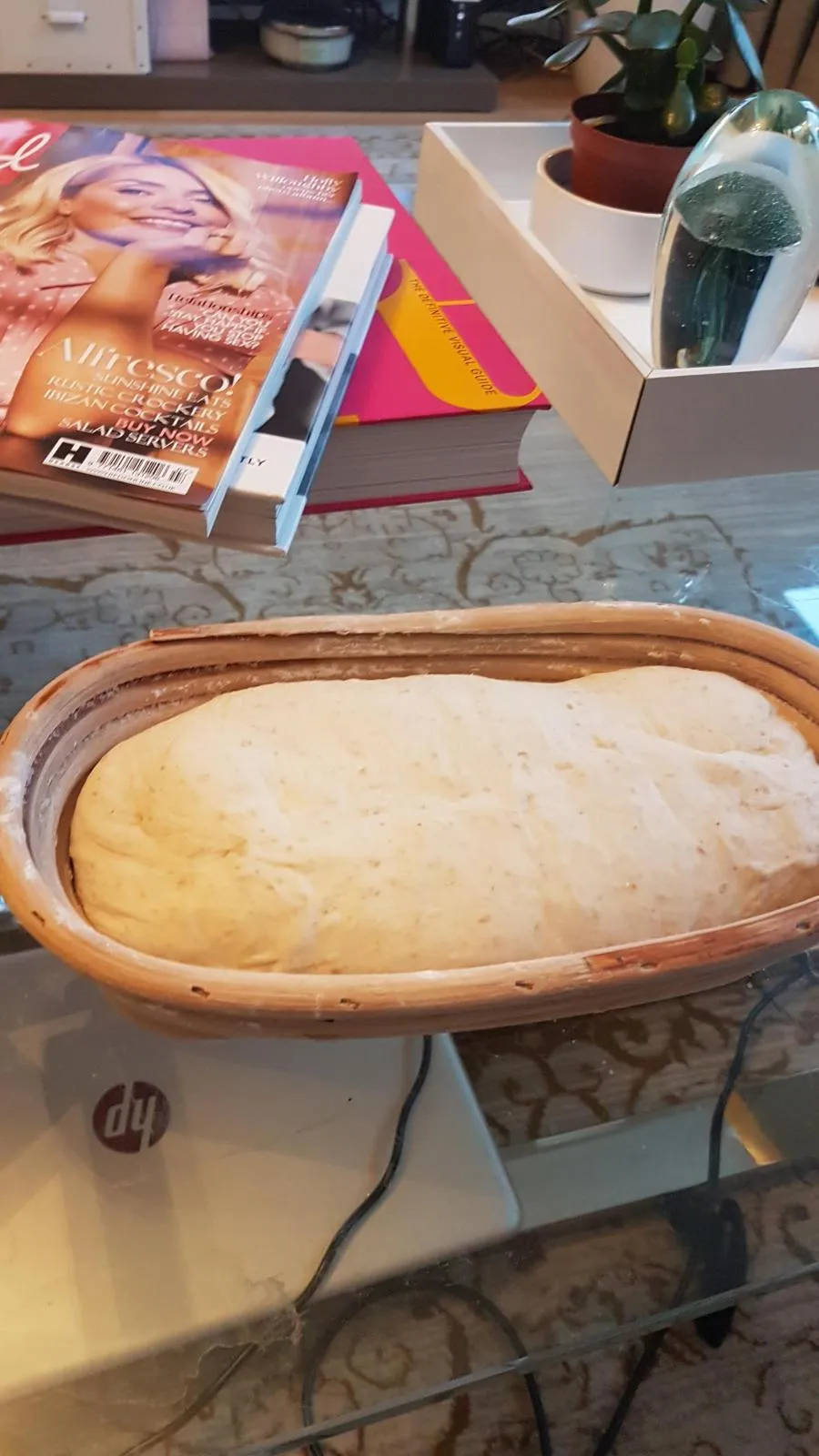
Image
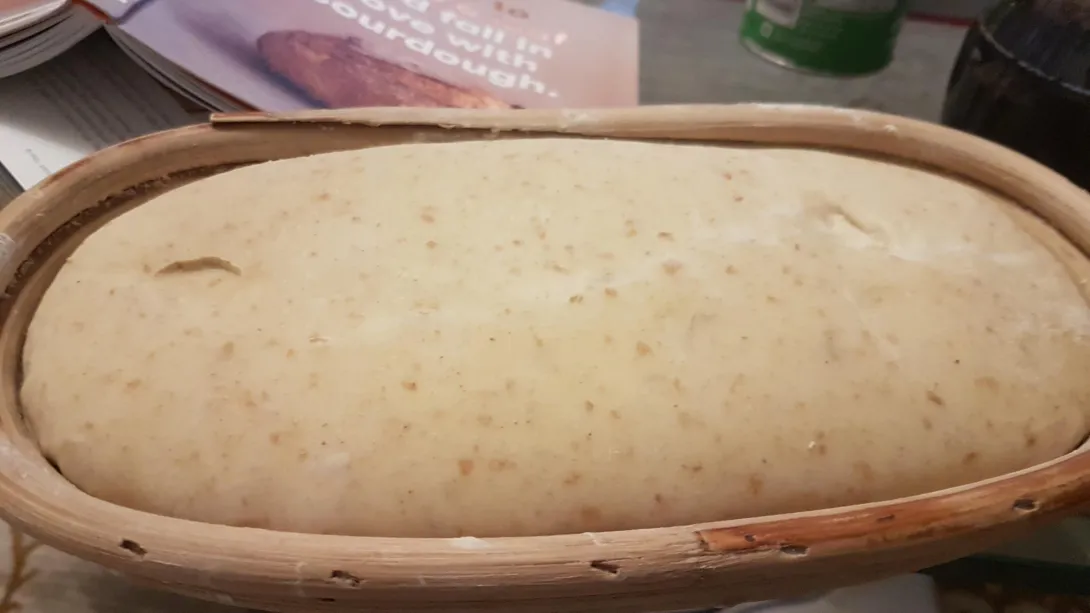
Image
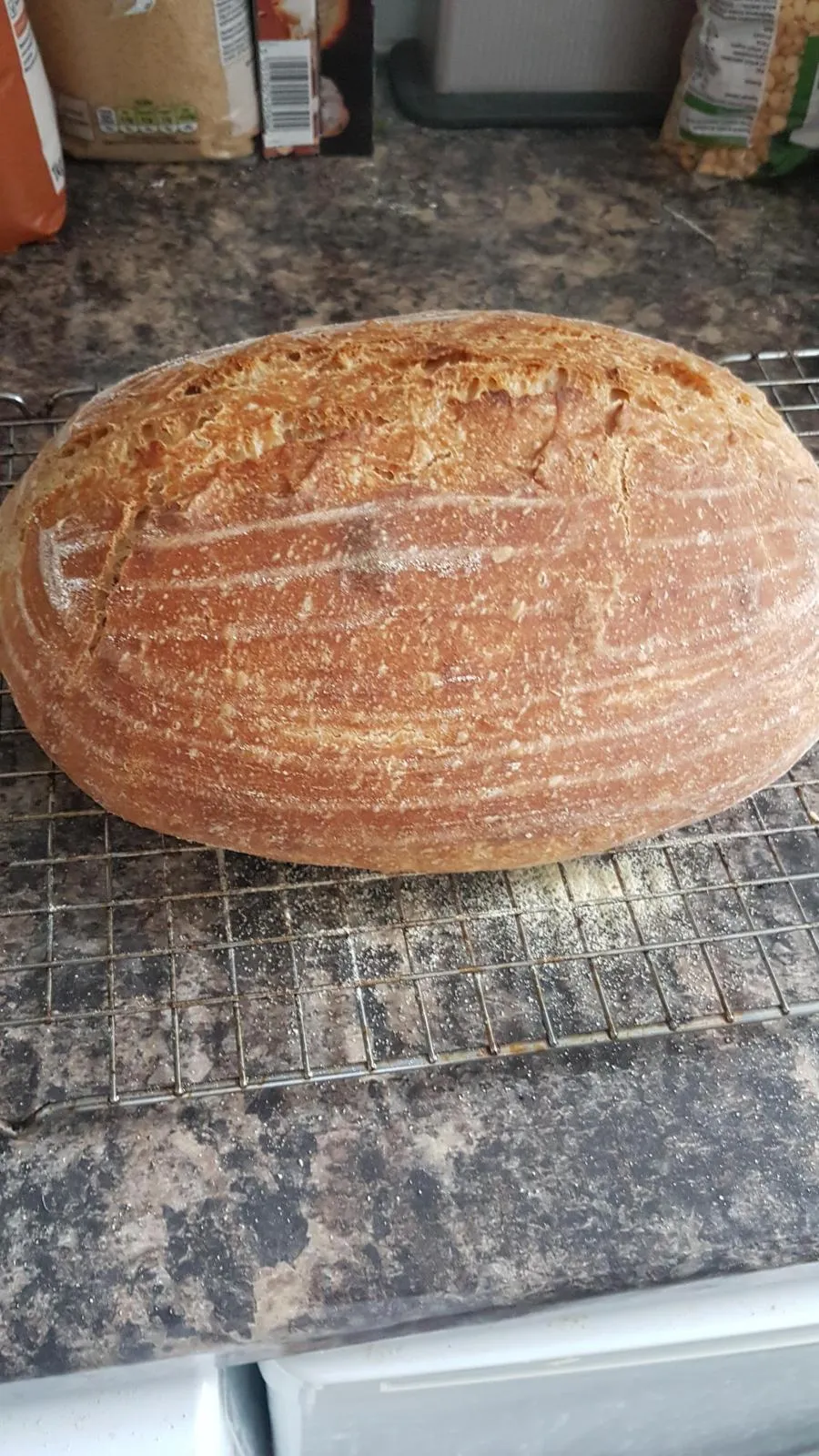
Image
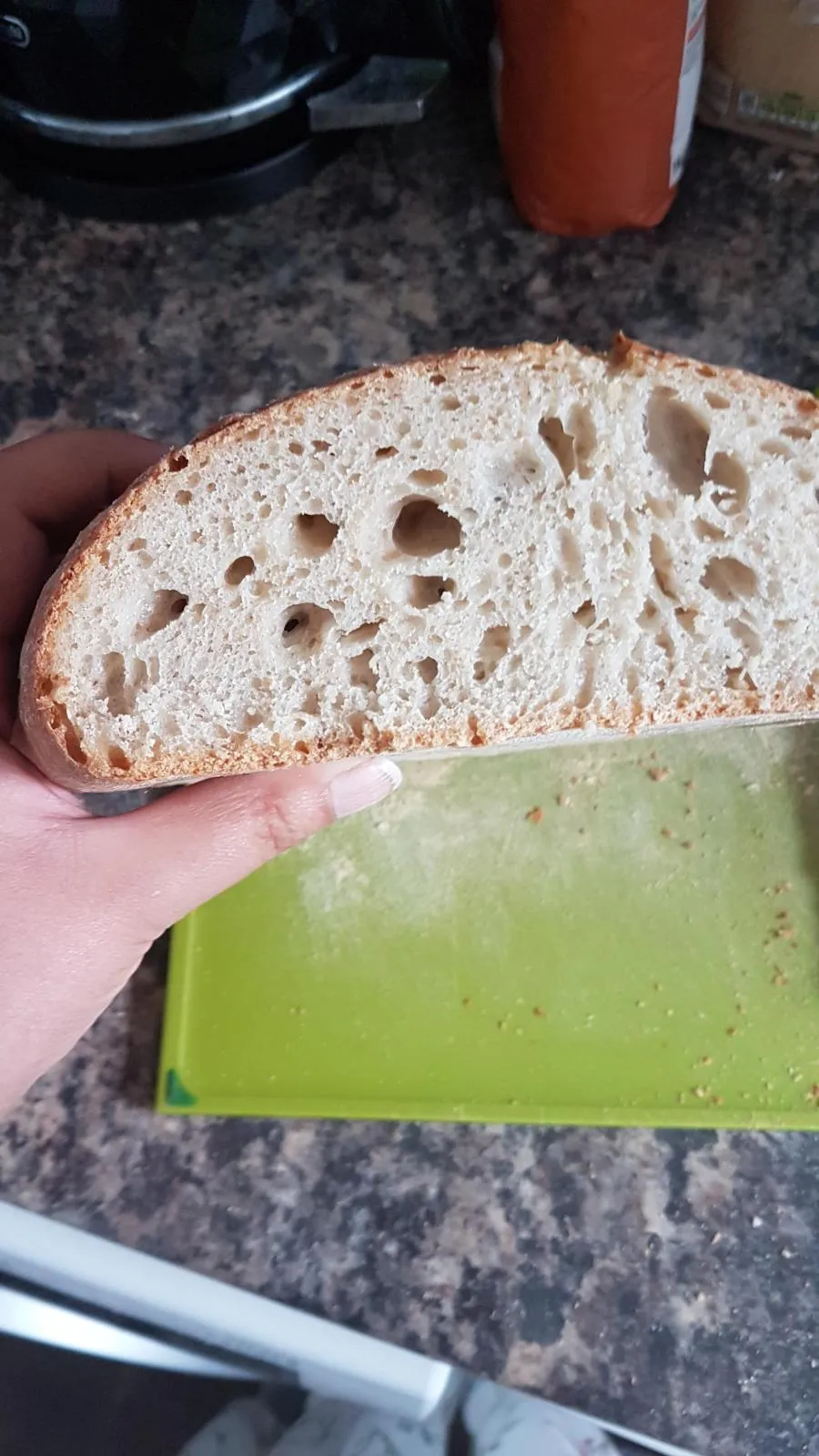
I have been following your thread, as a new sour dough baker myself. I just wanted to tell you your latest loaf looks great, in my view.
There sure is a lot to learn, isn't there? I have mumbled under my breath "I will not let bread defeat me" a few times, I must confess.
Happy baking!
Diana
Isn't it funny how we have managed to cook perfectly fine meals all these years - and then a loaf of bread which costs about 50p to make ends up meaning so much!
Thanks - I was pleased tbh and the "ooooh" it elicited from my sister made me think it was pretty good (although we ate the not-so-good ones too...!!)
Sabba